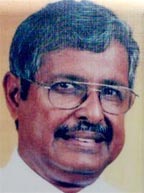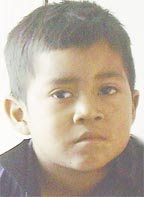A report on the plane crash near Kopinang on April 25, 2007 which claimed three lives has cited the lack of proper weather information, bad weather and the pilot’s decision to continue the flight under such conditions as contributory factors.

The April 9, 2008 report submitted by the Guyana Civil Aviation Authority (GCAA) to Public Works Minister, Robeson Benn, said when Captain Rohan Sharma continued with the Air Services Limited (ASL) flight in poor weather he breached the Guyana Aviation Require-ments for Weather Limita-tions. The Requirement states that “No person will commence a flight to be conducted in accordance with Visual Flight Rules (VFR) unless available meteorological reports, or a combination of reports and forecasts indicate that the meteorological conditions along the route, or that part of the route to be flown under VFR, will at the appropriate time, allow VFR operations.” On the basis of this finding the GCAA called on ASL to conduct a seminar with all its pilots on the requirements to carefully assimilate weather information especially if the information is a personal view of an individual’s physical observation of an assessment of the weather in the absence of scientific weather information. It also called on ASL to emphasise to its pilots the importance of adhering to the Guyana Aviation Require-ments (GAR) and the company’s flight operations manual with regards to flights and continued flights.
On April 25, 2007, during its third flight on that day by Sharma, the plane struck the top of the Yurubarrow Moun-tain in Region Eight, about 30 feet from the peak on the Maikwak side; three minutes from its planned destination – Kopinang. The plane was flying well below visual meteorological conditions and Captain Sharma, passengers Earnestina Moses and two-month-old Britney Perreira perished in the accident. The baby’s mother Bernice and her now six-year-old son Arnold Perreira survived and made a harrowing trek to safety down the mountain.

According to the report which was made available to this newspaper last week, Captain Sharma proceeded on a series of flights in accordance with the flight plan, however heavy rainfall caused delays at two destinations. At Paramakatoi the aircraft was delayed on the ground for almost an hour and a half and at Kato it was further delayed on the ground for close to two hours. Based on investigations on the ground at Kopinang as well as at Kato, the GCAA in its report noted that persons stated that the pilot had requested weather information from Kopinang twice.
At 5.15 the Medex at Kopinang, Marceleno, told the pilot that “the weather was now clearing up, it just stop raining and the airstrip is wet at Kopenang.” At 6.15 the Marceleno informed the pilots that “there was mild sunshine with blue skies at Kopenang but the area at Maikwak/ Kwebanna side of the Pakaraima Mountain range was dark and the weather was bad. He was also told that the airstrip was still wet and the cloud ceiling was approximately 1500 feet. Kopinang lies within the basin of the Pakaraima Mountain Range and the flight path to that destination is normally over the Maikwak/Kwebanna side of the mountain, the report said. It noted that the aircraft departed Kato at about 6.16 pm and crashed into dense forest some time during flight.
Meanwhile, the GCAA has acknowledged and stated in the report that no weather reporting facility is located at any of the interior locations and pilots typically use their own judgement based on the appearance of the weather and weather observations from other pilots in the area. It said too such reports could also be had from other good sources to determine whether to proceed with the flight.
The crash site
The search and rescue team had located the crash site the day after the accident but the report said it had not been able to access it until the following day due to difficult terrain and adverse weather. When the team reached the site it found Moses dead in her seat with her seatbelt still on. The woman had sustained deep cuts which penetrated her skull with other miscellaneous cuts and bruises on her forehead and about her body. Moses’s relatives buried her at Kopinang. Perreira too had cuts to her head and body and according to her mother the baby was flung out of her hand outside the aircraft. Relatives buried the baby at Kopinang. The GCAA said Captain Sharma was found slumped over the steering wheel of the plane. According to information stated on his death certificate he died from multiple injuries. The report noted too that no fire occurred due to the accident, neither on the aircraft nor at the crash site.

The report also quoted Perreira as saying that her son Arnold was buried under the aircraft and that she had had to dig him out from under the fuselage and trees where it had come to rest. The woman said she then climbed to the top of the mountain with her dead baby, placed her on the peak and climbed back down to assist her son to the top where they rested until daylight. Perreira, clutching the baby to her breast then crawled up and down hills with her son until she found a pathway in the jungle. Along the way she encountered some school children who ran to inform villagers who rescued the family. The Perreiras were taken to the medical centre at Kopinang and were subsequently brought to the city. Perreira told aviation officials that the weather was very bad and that she could not see anything. The woman said too suddenly trees appeared at the side of the aircraft then everything went blank. She regained consciousness some time later.
According to the report the ASL craft had undergone a 500 hours scheduled inspection just four days before the accident. The report said that inspection was completed by the company’s Approved Maintenance Organisation (AMO) and was then released to service by an appropriately Type-Rated License Aircraft Maintenance Engineer.
The GCAA said too it found that the aircraft completed one flight on April 22, five on April 24 and two on April 25, the day of the accident. Minor defects had been entered into the Technical Logbook by the respective commanders for the flights on April 22 and 24. It also said all defects were rectified by ASL AMO and the aircraft was returned to service by an appropriately Type-rated Licensed Aircraft maintenance engineer. On the day of the crash, Captain Sharma pre-flighted the craft and signed the technical logbook accepting it and successfully completed two flights on that day.
Captain Sharma held a commercial pilot’s licence with a rating for Single/Multi-engine land and a type rating on the BN-2 islander. The GCAA said he accumulated in excess of 11,000 hours total flight time. It also said he was a very experienced pilot who started his flying career in the Guyana Defence Force
Air Corps and after his departure from the army flew mainly domestic air operators.
He also flew part time for
the army.
Recommendations
After investigating the circumstances and finding a probable cause of the crash the GCAA had also recommended that air operators ensure that pilots adhere to weather reports and information. It also urged that pilots take into consideration the probable effects of adverse weather conditions before proceeding on flights or continuing flights in accordance with the flight plan. The GCAA also said that the meteorological office and the agriculture ministry must be equipped to provide radar coverage of the entire Guyana and this should include forecasting facilities.
The report said too that the aircraft was completely destroyed and its engines, propellers and accessories were sent overseas to ASL overhauler Airmakr Overhaul Incorporated of Fort Lauder-dale, Florida, USA. It said a detailed inspection and examination were carried out by the National Transportation Safety Board on behalf of the GCAA.
The report also pointed, as has been raised by many others, that Guyana does not have proper search and rescue equipment – `there is no specialized search and rescue team’. The report said that the search party that day comprised volunteer pilots and aircraft from local operators and staff of the GCAA. A privately owned Bell 206 helicopter was also utilized. The ground search party comprised the Guyana Defence Force and villagers.





